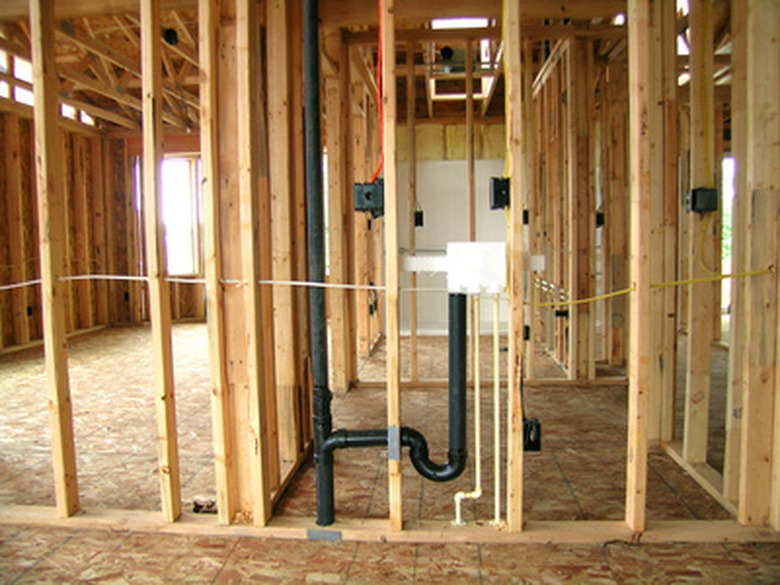What Size Hole For Romex?
House wires are frequently run through both vertical framing members, such as wall studs and window cripples, or through horizontally-placed floor and ceiling joists. Circular holes are drilled in the wood to allow the wire to pass from one side to the next.
Structural Considerations
Since most electrical codes no longer allow 14 gauge house wire in new construction, 12/2 gauge wire with a ground is predominantly used in most residential wiring circuits. Hole size through a joist (2-by-6 or larger) is usually limited by building codes to 1/3 of the board depth, which provides for ample room when pulling wires. However, vertical 2-by-4s pose different challenges for pulling wires.
Large Holes
The larger the hole for the ROMEX® wire the better off you are, as long as you don't compromise the structural integrity of the 2-by-4. If you go by the 1/3 rule, then 1 1/8 diameter is the maximum diameter, but that only gives the wire 1 1/8-inch protection from nails and wall board screws. One-inch or 3/4-inch holes would be better.
Pulling Wires
The biggest danger of using small holes in home wiring is damaging the wire when installing the cable. Therefore, hole size should be somewhat roomy, so as to accommodate two or three wires, passing through the same hole. Seven-eighths inch is actually the most common wire hole found in 2-by-4 framing.
